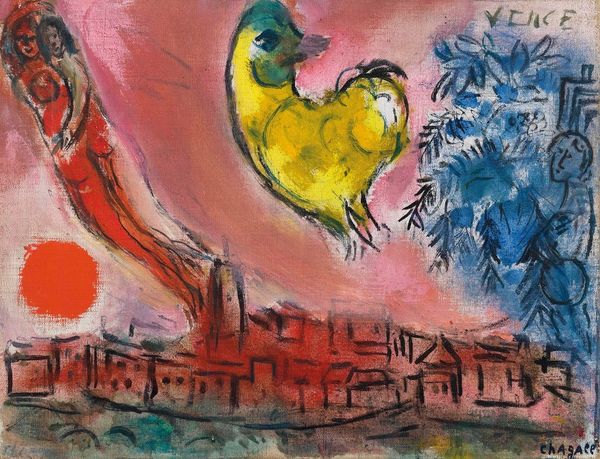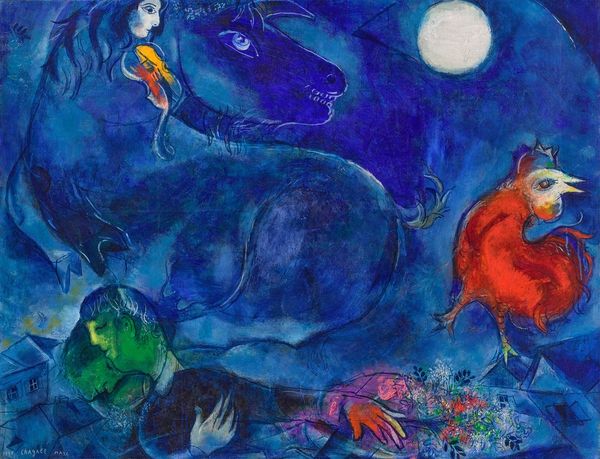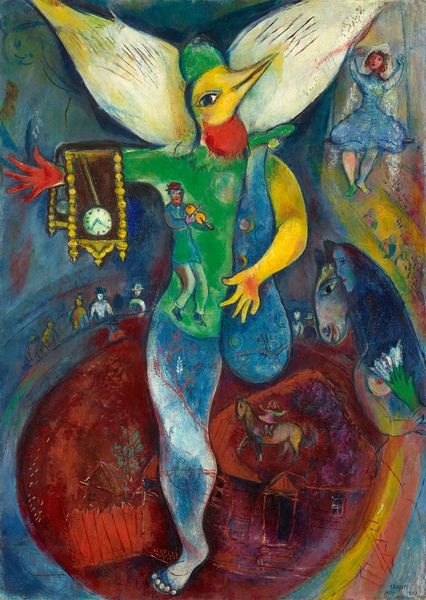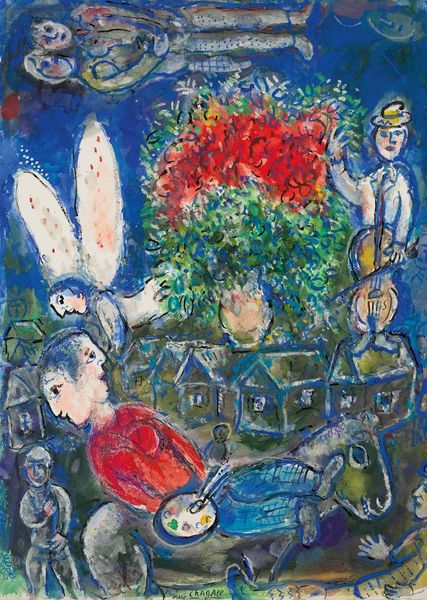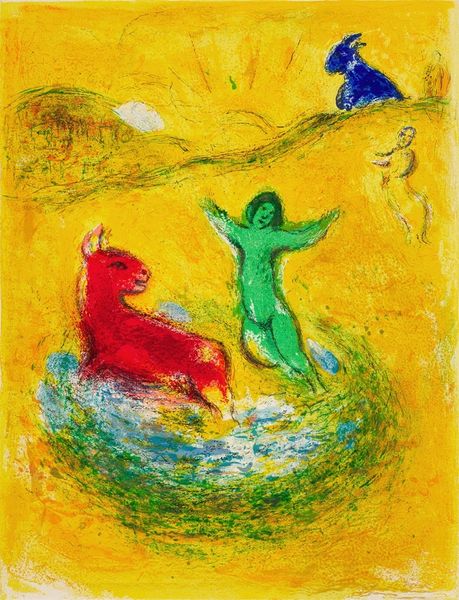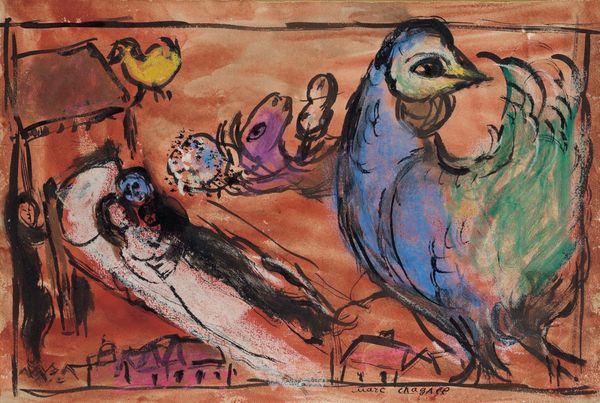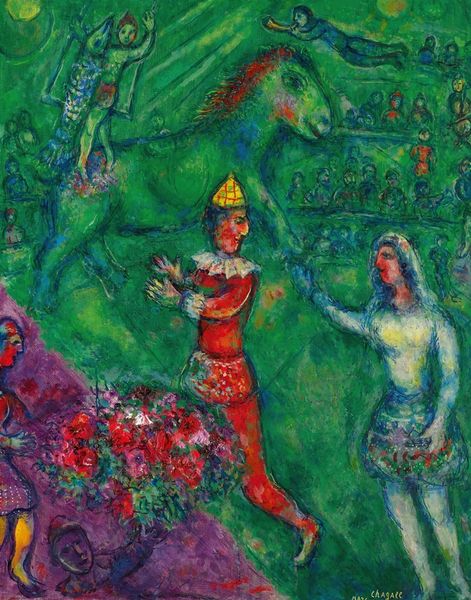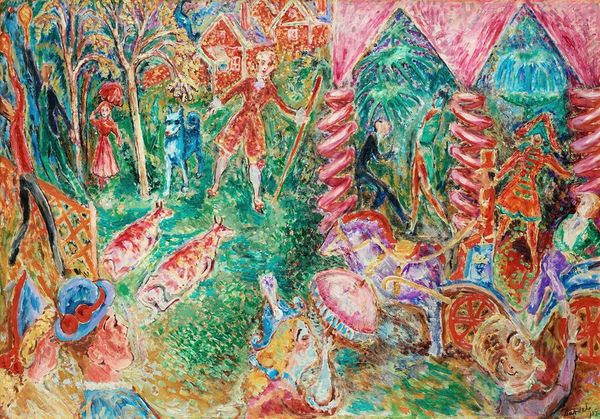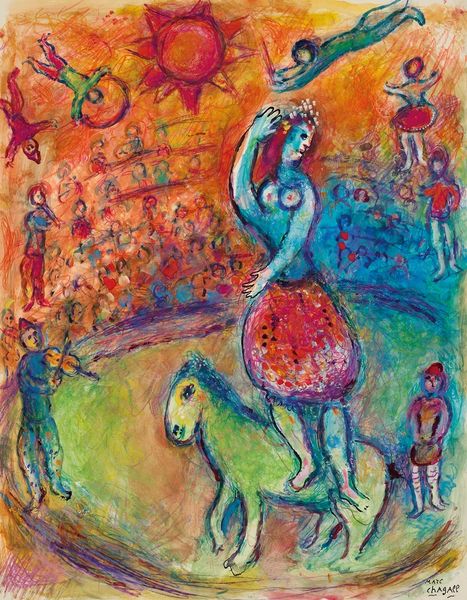
Copyright: Modern Artists: Artvee
Editor: Here we have Marc Chagall’s "L’ange au-dessus du village," painted between 1969 and 1972. It's an oil painting and quite dreamlike. The composition feels almost like a collage. How do you interpret this work through a formal lens? Curator: The picture plane is densely populated with representational elements, yes, but it is essential to consider how the structural relationship of line, color and form articulate Chagall's personal symbolic language. Observe how the flattened perspective and the use of overlapping figures negate traditional notions of depth. The tension produced from color, the juxtaposing yellows, reds, and greens – contributes significantly. How might this tension relate to the artist's internal vision? Editor: That's interesting. I was initially caught up in the figures, the angel and the lovers and musicians. But now, focusing on the interplay of those vibrant colors, I see a dynamic visual experience emerging from the contrast. Does the expressive brushwork contribute to this sense of dynamism as well? Curator: Indeed. The brushwork carries a sense of immediacy and impulsivity. Reflect on the role of gesture. What qualities are enhanced by the very visible mark-making? And how is that balanced and unified in a formal sense by the structuring compositions? Editor: I hadn’t considered the gestures until now, they give it movement. The rough strokes of paint make the angel seem like it's actively floating above the village. It feels more alive and not static. I am starting to understand. Curator: Precisely. Appreciating the formal structures enhances our awareness and unlocks deeper understandings of the work as a whole. We have explored his vision, color theory and plane depth. What have we learned here, from beginning to end? Editor: Understanding the elements and the painting itself has opened a door to understanding how formal attributes in art convey meaning and mood! Thank you for pointing that out, the method itself makes the piece come alive!
Comments
No comments
Be the first to comment and join the conversation on the ultimate creative platform.
